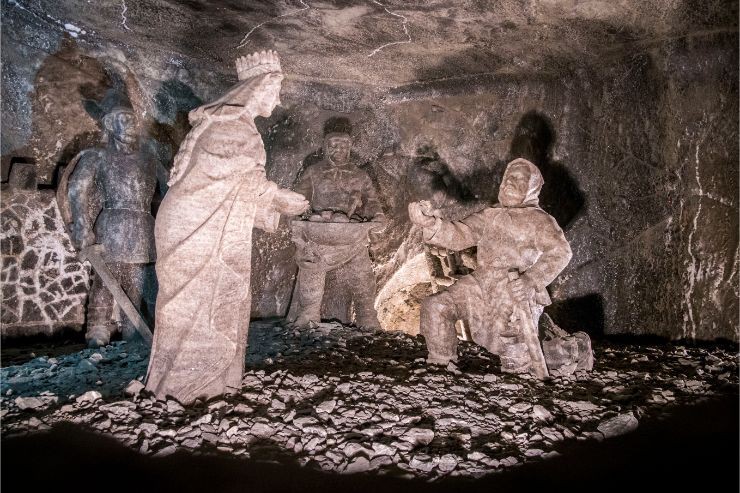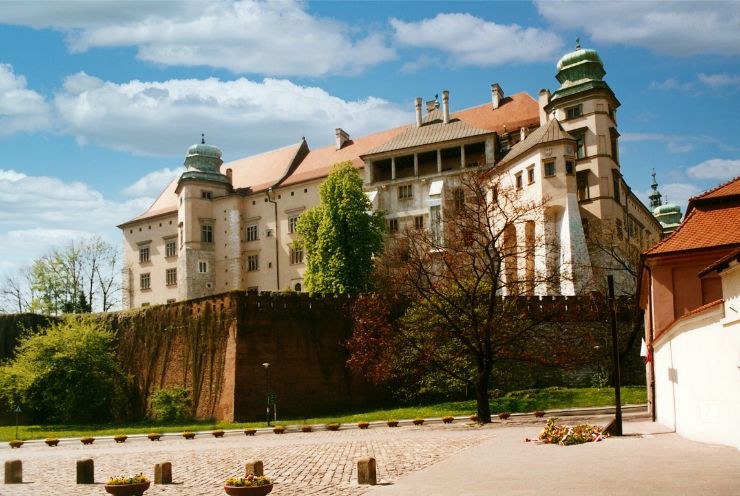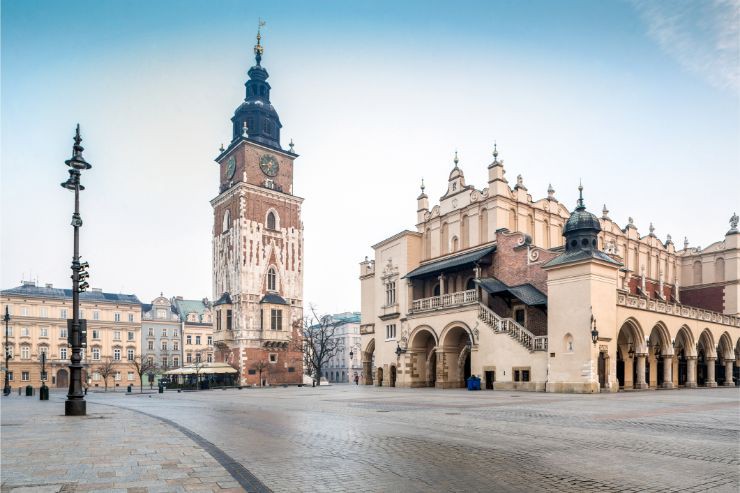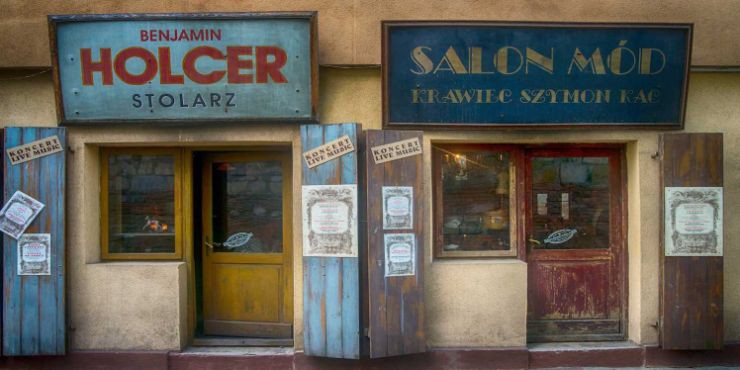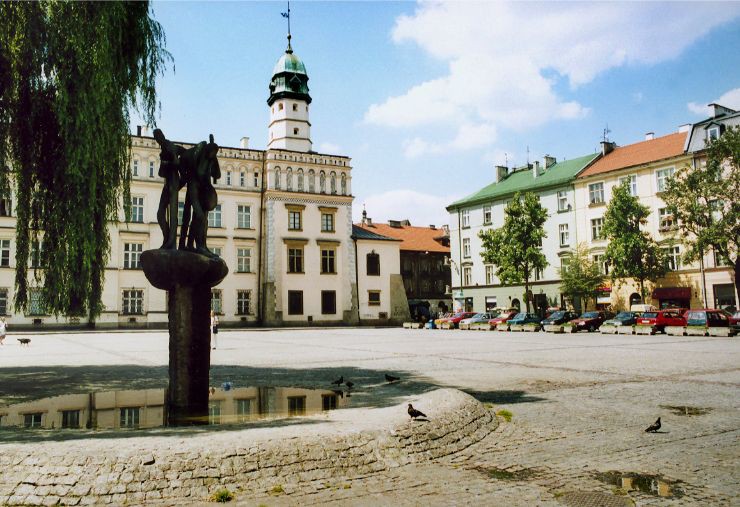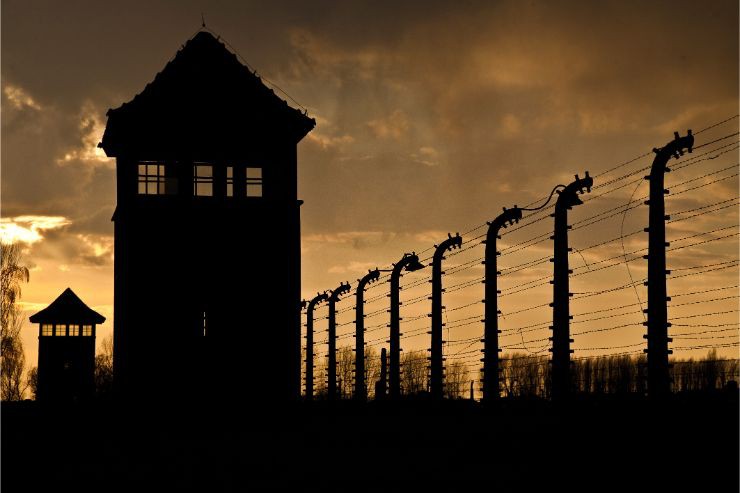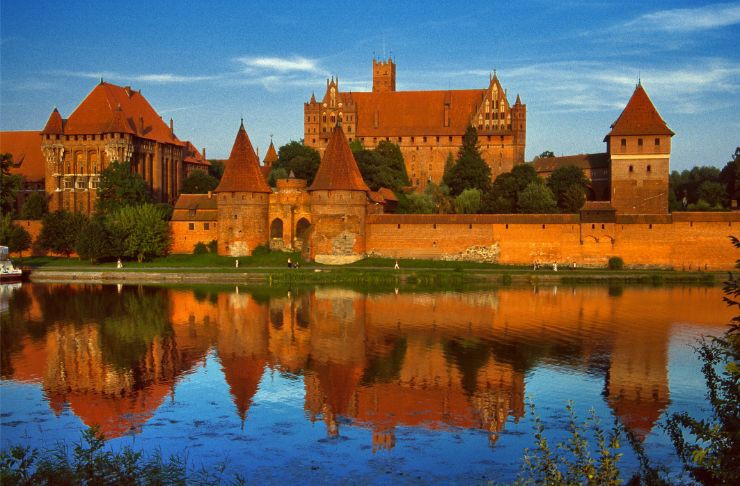People with a passion to travel often follow a certain pattern of exploring the world. If you are such a person, try to look to the UNESCO heritage list while deciding on the destination of your next trip. As many as 16 places from this list are in Poland - so it's worth visiting this country to see the most beautiful places of incredible historical value and experience an unforgettable adventure!
World Heritage List: Poland
At this moment, there are 16 Polish objects on the UNESCO list – 15 cultural heritage sites and 1 natural heritage. Four more objects are waiting to be included in the list of nominations. For now, they are on the Information List. These include:
- Old Town in Krakow, Cultural Heritage
- Royal Salt Mines in Wieliczka and Bochnia, Cultural Heritage
- Auschwitz-Birkenau: German Nazi concentration and extermination camp (1940–1945), Cultural Heritage
- Białowieża National Park (joint entry with Belarus), Natural Heritage
- Old Town in Warsaw, Cultural Heritage
- Old Town in Zamość, Cultural Heritage
- The medieval urban complex of Toruń, Cultural Heritage
- Malbork Castle, Cultural Heritage
- Mannerist architectural and landscape complex and pilgrimage park in Kalwaria Zebrzydowska, Cultural Heritage
- Churches of Peace in Jawor and Świdnica, Cultural Heritage
- Wooden churches of southern Lesser Poland in Binarowa, Blizne, Dębno, Haczów, Lipnica Murowana and Sękowa, Cultural Heritage
- Mużakowski (Muskau) Park (joint entry with Germany), Cultural Heritage
- Hala Stulecia in Wroclaw, Cultural Heritage
- Wooden churches of the Carpathian region (joint entry with Ukraine) in Brunary, Chotyniec, Kwiatoń, Owczary, Powroźnik, Radruż, Smolnik, Turzańsk, Cultural Heritage
- Lead, silver and zinc ore mine with groundwater management system in Tarnowskie Góry, Cultural Heritage
- Krzemionki - prehistoric flint mines, Cultural Heritage
Information List:
- Gdańsk – town of memory and freedom, Cultural Heritage
- Augustowski Canal, Cultural Heritage
- Valley of the Dunajec in Pieniny Mountains, Natural Heritage
- Primary beech forests of the Carpathians and other regions of Europe (extension of the entry), Natural Heritage
This is one of the cases where the numbers speak for themselves - Poland is a country full of cultural and natural wealth. And even if this destination may appear a little less attractive than Western Europe, more and more tourists are choosing Poland as their must-visit country. Come with us on an amazing journey through the most interesting UNESCO objects in Poland!
Salt mine „Wieliczka” – among world heritage sites: Poland since 1978
The famous salt mine in Wieliczka near Krakow is a place that you cannot miss when visiting Poland. The history of this mine is a testimony of its awesomeness. I bet you didn’t know that the history of salt mining in this area dates back to... the Middle Neolithic era. That's 3,000 years BC! The beginnings of exploitation are documented by numerous archaeological findings from the post-World War II research.
However, if you do your research and learn some facts, is hardly surprising that this place began to extract salt so early. Salt springs – the brine outflows, spontaneously arose in this area. Initially, the solution was purified and then brewed.
Unfortunately, natural brine outflows disappeared after about 3-4 thousand years. It was necessary to drill deep wells to continue salt extraction. The first shaft was made in Bochnia (where the well-known salt mine is located to this day. It is also inscribed on the UNESCO heritage list, the second well was made in Wieliczka. miners found shallow rock salt deposits. The wells were turned into shafts and therefore the mine was established.
What is worth seeing in the Wieliczka salt mine?
Currently, about one million tourists annually from around the world come to the Wieliczka Salt Mine for a trip to the Krakow Saltworks Museum and the Underground Tourist Route. The route itself is 3 km long and consists of 20 chambers located at levels from I to III (64 to 135 m deep). The tour lasts about 2-3 hours, and the route is also adapted to the needs of wheelchairs – so there is no limit to conveniently visit the mine with a guide.
Location: The "Wieliczka" salt mine is located in the town of the same name in Lesser Poland Voivodeship, 16 km southeast of Krakow. If you are staying in Krakow, it will be most convenient for you to get to Wieliczka by the train, which you can catch on the Main Railway Station.
Fun fact: In the "Wieliczka" salt mine you can celebrate New Year's Eve or prome 125 m under the surface of the Earth.
Old Town in Krakow – on the UNESCO list since 1978
The Old Town is the oldest, historic area of Krakow – the former city of kings, which served as the capital of Poland until 1795. By the Old Town there we mean, among others:
- The Main Square, known as one of the largest and most beautiful markets in Europe.
- Kazimierz - once a separate city in which the Jewish quarter was located.
These places are definitely worth visiting!
Main Square
Do you know that the architectural layout of the Old Town in Krakow has remained unchanged since the Middle Ages? This is amazing because of the number of historical disasters that have passed through Krakow. In the Baroque era (17th century) The Old Town was twice destroyed by the Swedes. All the gothic churches, had to be restored. In 1795 Poland was divided by hostile foreign armies and Krakow became a “part” of Austria.
Fortunately, Krakow has always remained the cultural and spiritual capital of Poland and perhaps this saved the city from complete destruction – even despite the fact that in the nineteenth century it was hit by the most tragic fire in its history.
What is worth seeing on the Main Square?
One of the most interesting and certainly the most beautiful attractions is St. Mary's Basilica with a characteristic twin towers. You can see them on almost every postcard from Krakow. It is also worth visiting the Underground of the Main Market Square in Krakow, which is a branch of the Historical Museum of the City of Krakow. If you like wandering, stroll along Grodzka, Floriańska or Kanonicza Streets and be sure to see the Wawel Castle located near the Market Square. One walk around the Old Town is enough to fully understand why this district was added to the World Heritage list by UNESCO. Krakow Main Square is an eye candy and history lesson in one.
Kazimierz District
The second part of the Old Town in Krakow, inscribed on the world heritage list is Kazimierz. It is a district slightly less visited by "mainstream" tourists, but eagerly picked by people hungry for historical knowledge about Krakow – Jewish culture in the past, to be exact. In recent years, Kazimierz has also become increasingly popular for Krakow's high society, bohemia and hipsters, due to its unique atmosphere.
Kazimierz became a village in the fourteenth century and was partially independent up until nineteenth century, when it became one of the Krakow’s districts. The north-eastern part of the city was a Jewish quarter. In 1495, due to the decision of king Jan Olbracht, the Jews of Krakow were resettled to the former village named Bawół (eng: Buffalo) located in these areas, which later transformed into the city of Kazimierz. It is no wonder then, that an area of such historical value was included in the Heritage List by UNESCO. Kraków has to offer many gems and Kazimierz is definitely one of them.
Kazimierz was deserted after World War II, when the Jewish nation was almost totally destroyed. There’s another Krakow district that tells the bone-chilling war history. Next to Kazimierz, you can find Podgórze. This district was transformed by Nazis into a Jewish ghetto during World War II. If you are interested in World War History, you should definitely visit them both.
What is worth seeing in Kazimierz?
The Wolnica Square is certainly interesting. Especially the Ethnographic Museum located next to it. The building used to serve as the town hall and the location of the Kazimierz’s city authorities. Also the Church of Corpus Christi should catch your eye. It combines 3 architectural styles: Romanesque, Gothic and Baroque. Don't forget about the Old Synagogue, which is one of the oldest surviving synagogues in Poland. In between churches and architectural gems, you must stroll through the charming streets in Kazimierz: St. Wawrzyniec Street, Mostowa street or Józefa Street.
Location:
You can get to Kraków's Main Square and Kazimierz by heading towards the city center. Most trams and buses run there. If you want to visit Kazimierz, get off at Stradom, Dietla or Miodowa station, and if you wish to visit the Main Square – at the Słowacki Theater, the Main Post Office or the Bagatela Theater station. You can also take a guided tour that will show you around the Old Town that is the Main Square and Kazimierz.
Fun fact: There is a casual atmosphere on the Main Market Square in Krakow - wandering around, you'll definitely hear street musicians, and often entire concert groups. And at St. Wawrzyniec Street in Kazimierz you will find a whole square with food trucks (this is the first of many such places in Krakow).
Auschwitz-Birkenau: a complex of German Nazi concentration camps - inscribed on the UNESCO world heritage sites Poland list in 1979
The extermination camp located in Oświęcim is an object associated with one of the most tragic events that has been written on the pages of Polish history. During World War II (1939-1945), Nazi Germany created a group of concentration camps in this area (Oświęcim, Brzezinka and Monowice).
In 1940, the Germans created a camp to imprison Polish political prisoners there. In subsequent years, it was gradually expanded to create the main center for the mass extermination of Jews from all over Europe. It is said that 1.1 million Jews were murdered, as well as almost 150,000 Poles, 23,000 Romani and 12,000 Soviet prisoners of war and those of other origins.
The structure of the group of German Nazi concentration camps was divided into three parts. In the so-called "main camp" (Auschwitz I) in Oświęcim, there was located a forced labor camp and the management center of the entire complex. Auschwitz II in Birkenau (Brzezinka) was transformed into an extermination camp witch horrifying gas chambers and a crematorium. Auschwitz III in Monowitz (Monowice) was a forced labor camp at the Buna-Werke plant belonging to the IG Farben concern.
What is worth seeing in Auschwitz-Birkenau?
When visiting this dark monument of history, which has become a symbol of the Holocaust, you must see both camps that are open to visitors: in Oświęcim and Brzezinka. The camps are located about 3.5 km from each other, and a free bus runs between them.
The Auschwitz I camp housed, among others, camp arrest, SS offices and the main headquarters of the entire camp group. Currently, it houses the Auchwitz-Birkenau Memorial and Museum. Auschwitz II housed most of the mass extermination facilities and barracks. The ruins of the gas chambers, prisoners' rooms and many kilometers of fences and roads still remain in the camp.
Location: Oświęcim is located 66 km from Krakow and is in the Lesser Poland Voivodeship. From Krakow you can get there by bus, which departs from the Krakow Central Railway Station-East. If you have stayed in Krakow, it is best to go to Auschwitz-Birkenau for a day trip with a guide.
Malbork Castle - inscribed on the world heritage list in 1997
If you have time and want to go to the other end of Poland, be sure to visit the Malbork Castle. It is a magnificent building erected by the Teutonic Order. The building was under construction from 1280 until the mid-15th century. And it payed off! The castle is magnificent. Once the castle played an important role – it was the capital of a powerful state on the southern side of the Baltic Sea. On September 14, 1309, the Grand Master of the Teutonic Order Sigfried von Feuchtwangen began his tenure in Malbork.
After the end of World War II, Polish Army handed over the building to local administrative authorities, which considered demolition due to the huge amount of damage (during the war almost half of the castle was demolished). Fortunately, after 1951, the building was slowly rebuilt, and regain its appearance from the Middle Ages. The Castle Museum works since 1961, and in 1997 the castle in Malbork was recognized as one of the cultural gems of UNESCO: Poland list.
Today, you can visit the castle with a guide – the tour lasts about 3.5 hours.
Location: The castle in Malbork is located in the Pomeranian Voivodeship, about 40 km southeast of Gdańsk. The building rises on a hill above the Nogat.
Fun fact: History lovers organize a staging of the Siege of Malbork by the army of King Jagiełło every year in mid-July. It is organized at the Battle of Grunwald, which is one of the most famous festivals of medieval culture in Europe.
This list is only our subjective choice. There are way more beautiful places in Poland for you to visit. Did we convince you to visit the UNESCO world heritage sites: Poland edition? We hope so!
